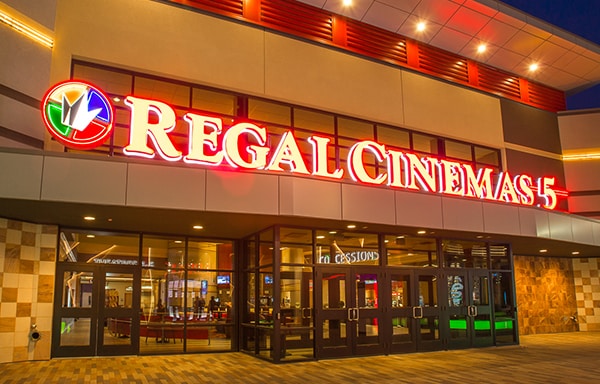Reviving the Silver Screen: A Deep Dive into Regal Cinemas

The Majestic Beginnings of Regal Cinemas
Regal Cinemas was not merely a movie theatre chain; it was the manifestation of the cinematic experience for millions across the United States. Founded in 1989 in Knoxville, Tennessee, by Mike Campbell, this enterprise rapidly expanded, often acquiring and merging with other cinema chains, ultimately evolving into one of the most significant players in the industry. The company’s ascent mirrored the growing love and appetite for movies among the masses, making it an essential part of American culture.
Rapid Expansion and Industry Dominance
By the dawn of the 21st century, Regal Cinemas had established its dominance nationwide, boasting thousands of screens. This remarkable growth wasn’t just a result of luck or timing. Regal employed strategic moves, such as acquisitions of other chains like United Artists Theatre and Edwards Theatre. These acquisitions expanded their geographic reach and amplified their influence in the film distribution process. Their power meant they played a role in deciding which films got big releases, having a say in the country’s cinematic landscape.
The Digital Transformation: A New Era
The movie industry underwent a significant shift in the late 2000s and early 2010s, moving away from traditional film reels to digital projection. Regal Cinemas invested heavily in this digital revolution, always striving to be at the forefront. They equipped their theaters with state-of-the-art digital projection systems and superior sound quality, promising movie-goers an unmatched experience. This technological upgrade also opened doors to streaming live events, hosting film festivals, and even e-sports events, transforming what a cinema can offer.
Challenges Faced: From Streaming Services to Pandemics
Like any colossal entity, Regal Cinemas faced its share of obstacles. The traditional cinema model started feeling the heat with the meteoric rise of streaming platforms like Netflix, Hulu, and Amazon Prime. People had the luxury of watching the latest releases in the comfort of their homes, leading to declining box office revenues. However, Regal responded by improving their in-theatre experience with reclining seats, diverse food and beverage options, and loyalty programs. But just as they were navigating the streaming challenge, the COVID-19 pandemic struck, temporarily shutting down theaters worldwide and causing an unprecedented halt in their operations.
The Resurgence: Regal’s Plans for the Future
Despite the setbacks, Regal Cinemas’ spirit remained unbroken. Once the world started emerging from the pandemic’s grasp, Regal was among the first to open its doors, albeit with necessary safety measures. They initiated partnerships with filmmakers, offering exclusive screenings and emphasizing the irreplaceable charm of watching a movie on the big screen. They also adapted their business models, introducing subscription services and dynamic pricing to counter the appeal of streaming services.
Moreover, they began investing in more than just movies. Interactive experiences, like augmented reality and virtual reality zones within their premises, started cropping up, making a trip to Regal not just about the film but an overall entertainment experience.
The Legacy and Contribution to Cinema Culture
Regal Cinemas’s decades-long history has contributed profoundly to the American cinema culture. For many, a trip to a Regal theater is wrapped in nostalgia – a memory of a first date, a family outing, or the sheer joy of being transported to a different world on the silver screen. Their commitment to enhancing the cinematic experience, whether through advanced tech, luxurious seating, or the inclusion of indie films in their repertoire, has solidified their place in the hearts of movie-goers.
As streaming continues to rise and the very nature of entertainment undergoes metamorphosis, companies like Regal Cinemas remind us of the magic of movies. Their history, resilience, and continuous strive for improvement testify to their love for cinema and the audiences grace their theaters. Here’s to many more decades of storytelling, laughter, tears, and the unmistakable aroma of buttery popcorn.
The Theatre Architecture: More than Just a Viewing Space
One of the most underrated aspects of Regal Cinemas is its architectural design. Throughout its history, Regal has often emphasized creating theaters that resonate with the community’s aesthetics. Their theaters often combine the grandeur reminiscent of the golden age of cinema with modern design touches. Spacious lobbies, iconic neon signs, and even art-deco inspirations in certain locations make a Regal Cinema not just a place to watch a film but an experience. Architectural designs often prioritize acoustics, ensuring every whisper and every note of music reaches even the farthest seat in the hall.
Community Involvement and Outreach
Regal Cinemas isn’t just about the business of movies; it’s about community-building. Over the years, they have been involved in numerous community outreach programs, offering discounted tickets for school outings, sponsoring local events, and even hosting charity premieres. Their partnership with organizations that cater to underprivileged children gives many their first taste of the magic of cinema. These initiatives underscore the ethos of Regal – to make cinema accessible and enjoyable for everyone.
Cinema’s Role in Sustainability: Regal’s Environmental Initiatives
Regal Cinemas has stepped up its game in an era where sustainability is paramount. There’s a growing emphasis on greener operations, from reducing energy consumption with LED lights and energy-efficient projectors to initiatives aimed at reducing waste. Recycling programs within their theaters and eco-friendly concession items show Regal’s commitment to entertaining communities and preserving them for future generations.
Employee Growth and Development
Behind the screens and the luxurious seating, a vast team of individuals make the Regal experience seamless. Each plays a crucial role, from those in customer service to the projectionists. Regal has often emphasized employee growth, providing training opportunities, and creating a work environment that values each member. Employee retention rates and testimonials frequently shed light on a company’s work culture, and Regal stands tall.
The Future: Beyond Traditional Cinema
While movies will remain at its core, Regal Cinemas continuously explores what lies beyond traditional film viewing. Concepts like interactive movie experiences, where audiences can vote on the outcome of a scene in real-time, or immersive 4D experiences that engage all senses are just the tip of the iceberg. As technology advances and the line between reality and virtual experiences blur, Regal aims to be at the forefront, ensuring audiences are not just viewers but participants in the stories they love.
With these additions, the deep dive into Regal Cinemas provides a panoramic view of its significance, challenges, and prospects. From its inception to its future vision, Regal Cinemas’s journey encapsulates the cinematic experience’s evolution and its timeless allure.
Also, Read The Following: stonk o tracker
